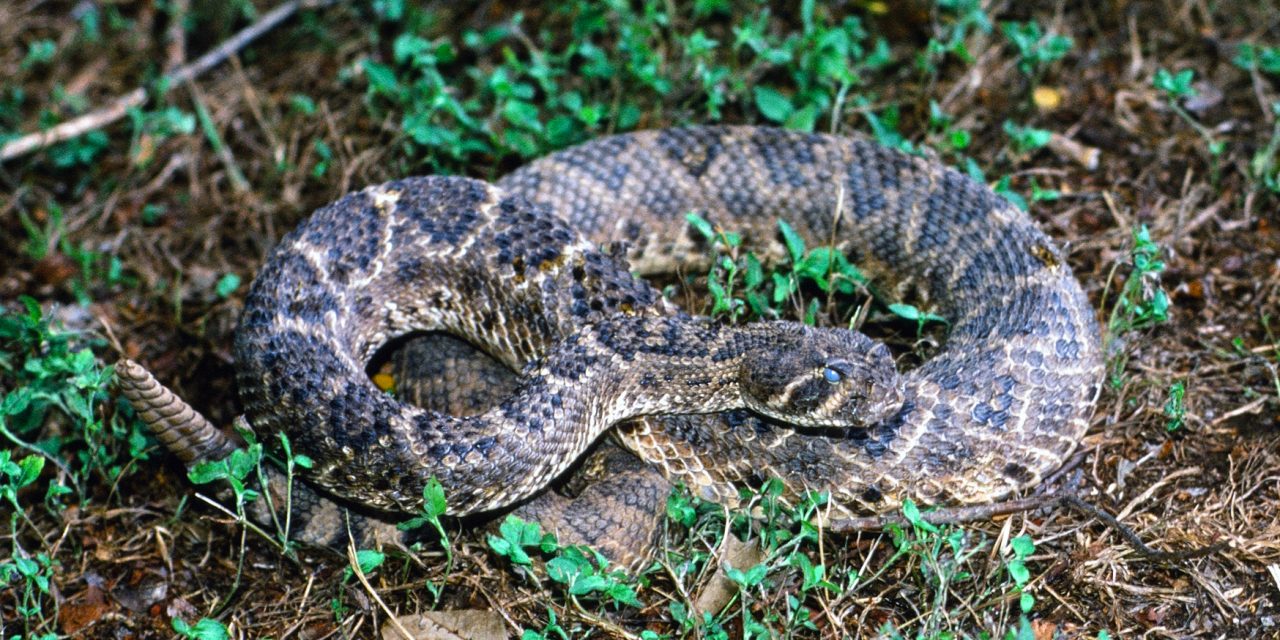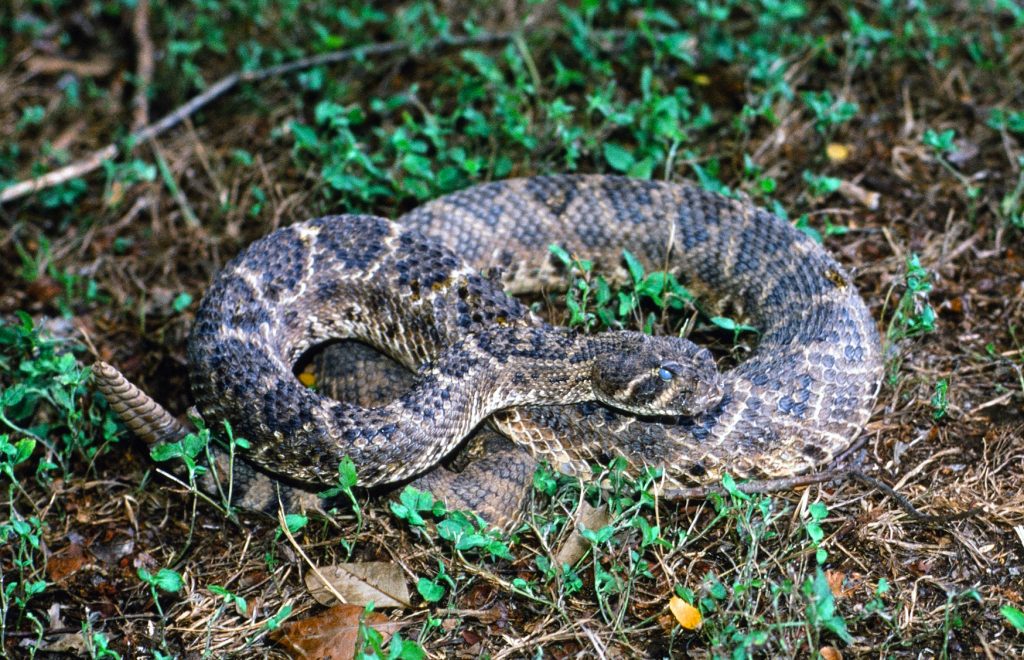Texas has four poisonous snakes: Cottonmouths, copperheads, coral snakes, and rattlesnakes. If you don’t know the difference, google them. Corals have the most potent venom but are seldom encountered. The others are active in much of Texas. Pictured is a western diamondback rattler. (Photo by John Jefferson)
By John Jefferson
A man I knew, now passed, recorded a hit song entitled “The Snakes Crawl at Night.”
There’s truth to that. Most readers know. It was driven home to me one night a few years ago in Dimmit County when a game warden I was visiting insisted on lighting the walk back to my truck afterwards. He said rattlesnakes were prevalent.
And spring is the time they’re most active. Turkey hunters MUST beware. My friend, Horace Gore, was once bitten on his boot top three times while he stood listening for a gobbler.
I had a close call one spring photographing deer. While seated on a small trail where I had placed my tripod and long lens, a rattler crawled up BEHIND me. As it settled into a coil, the rattles clicked once, alerting me to its presence. It was just out of striking distance, but that ended my photo session for the day.
Another time, photographing a man rattling antlers to attract deer, I thought I had sat on a snake. It turned out to be a prickly pear pad, but that was almost worse; snakes only have TWO fangs!
A female hunter didn’t fare as well. At Happy Hour one evening, she confessed that on a turkey hunt with her parents, she decided to answer Nature’s call just before daylight. Removing necessary clothing, she proceeded. She felt what she thought was a stick poking her and moved slightly. Later, as she stepped into the shower, she let a scream that quickly brought her mother. There were two small red spots on her back side. The doctor confirmed snake bite. She said skin sloughed off for six months afterwards. I would guess it had been a copperhead.
A lady I know well has said if she’s ever snake bitten, it probably won’t be on the leg.
Probably the worst snakebite happened during high school years. Kids were swimming at Chinaberry Check, a rice field irrigation canal known as being clothing optional before that was a term. As my friend climbed out on the brushy bank, a cottonmouth struck multiple times. He said it wrapped around his arm and continued striking.
He was hospitalized for weeks. Nearly died. Missed school. Fell behind. Chinaberry Check lost its appeal…at least at night.
One Thanksgiving, my 12-year-old son, Johnny, and I had canoed across a creek to our stand. Hunting until almost dark, we canoed back across silently. Johnny got out to pull the canoe up a little. The next things I heard were a rattle snake rattling in front of the canoe and Johnny letting out a scream. He jumped back in the canoe and ran into my arms shaking all over. I stammered out, “Did it get ya?”
“I don’t think so,” he muttered, “but it was close.” We were held prisoner in the dark as the snake continued rattling. Other hunters heard us and shined lights on the rattler. The wrath of a frightened teenager soon took revenge.
JJ






